There’s a place in Colombia where I felt truly in the zone. And it happened to be the Zona Cafetera.
This land of fertile valleys sprinkled with small pueblos is where most of Colombia’s coffee originates. It’s also one of the most fun parts of Colombia to explore.
I was moving from one coffee town to another by means of a Chiva, a colorful type of modified truck that’s used as a local bus. It moved at a nail’s pace and got stuck in the mud a few times, but I didn’t mind the syrupy-slow journey, being treated to such wonderful scenes of local life and views of glorious landscapes.
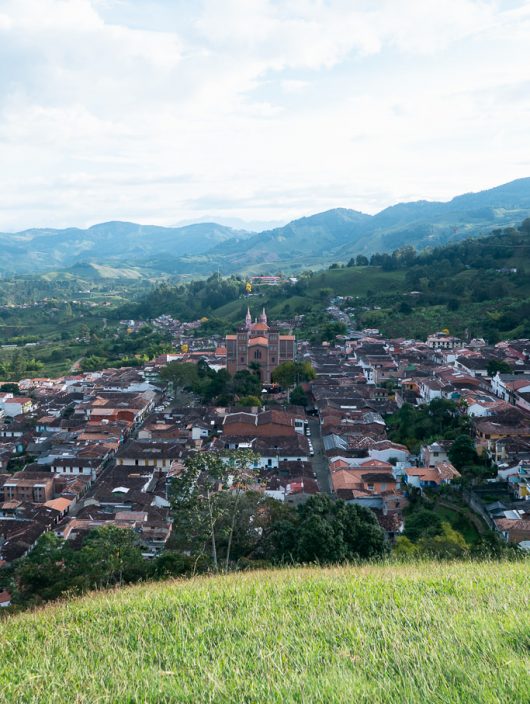
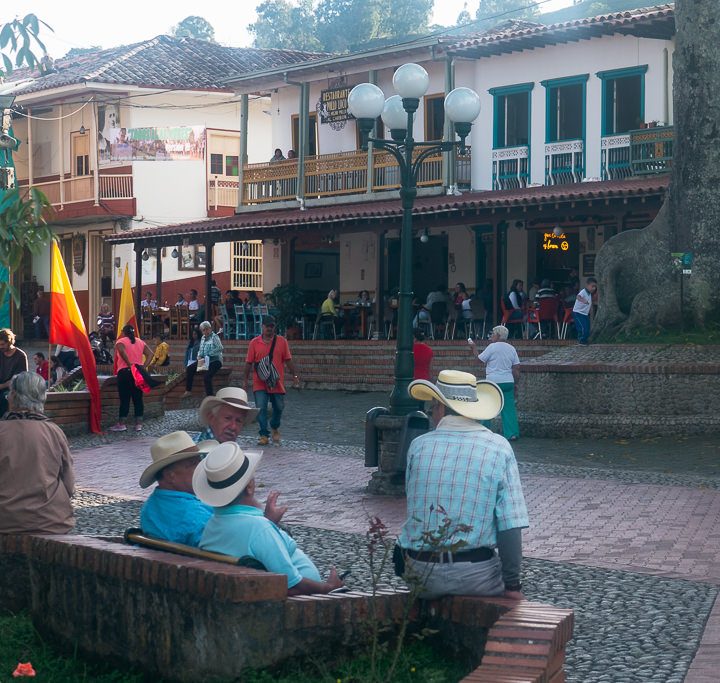
We passed rolling hills quilted with smallholder coffee and banana plantations. Butterflies and hummingbirds darted from flower to flower. In villages, mustachioed ranchers and coffee farmers wearing striped ponchos and white hats went about their daily business.
All this gave me a delightful sense of place. It’s a feeling that persisted during my two weeks of hopping through the Coffee Zone (also known as the Coffee Triangle or Eje Cafetero in Spanish).
Whether you’d like to add a coffee town or two to your Colombia itinerary, or you wish to follow my exact route as shown in the map, let me share with you all the details.
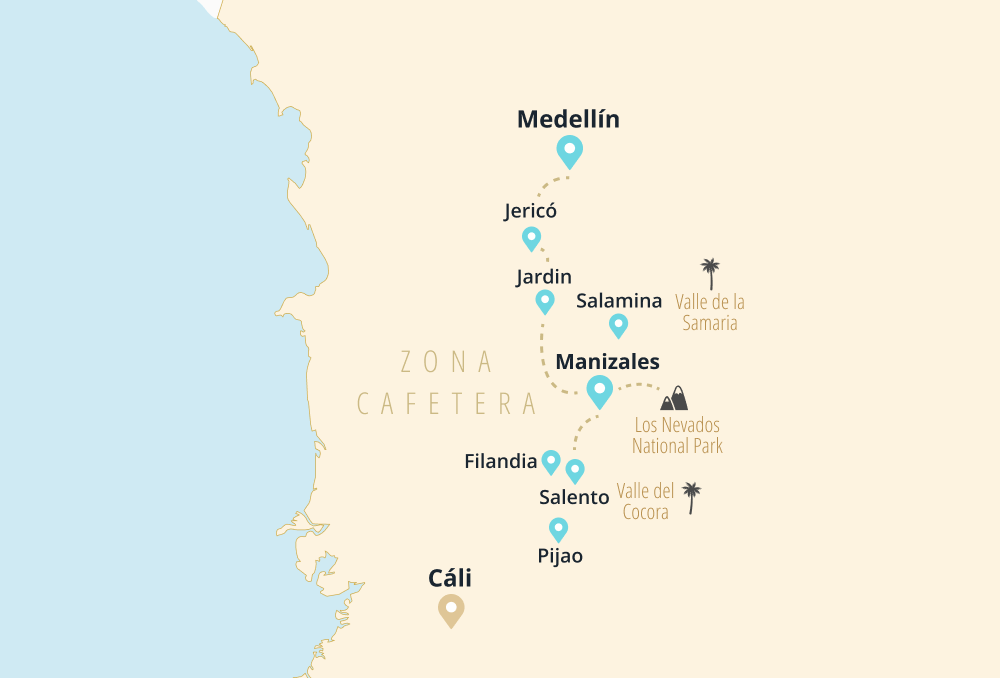
Plan your trip in Colombia
Where is the Zona Cafetera?
Colombia’s fertile coffee-growing region is found roughly within a triangle between the cities of Medellin, Cali, and Bogota. This entire area is recognized by UNESCO as an exceptional example of a sustainable and productive cultural landscape.

Much of this region is mountainous with the coffee often cultivated in small plots on steep slopes. Being often at higher elevations, the weather is pleasantly milder than on the searingly hot and sweaty northern coast of Colombia.
Besides the lovely landscapes, you can enjoy villages and towns with colorful traditional architecture, many of them being among the recognized heritage towns of Colombia.
Watch my adventures in the Zona Cafetera below:
Jericó
This was my first stop in the Zona Cafetera and quite possibly my favorite.
Easily reached from Medellin, it’s nevertheless off the usual travel trail. If you’d enjoy just spending time in an authentic coffee town, and don’t mind the lack of any easy-to-book tours or off-the-rack day trips, then I can’t recommend Jerico more highly.

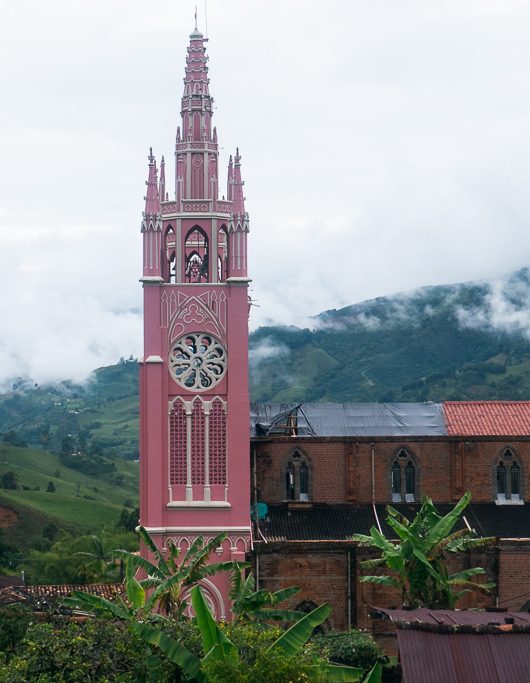
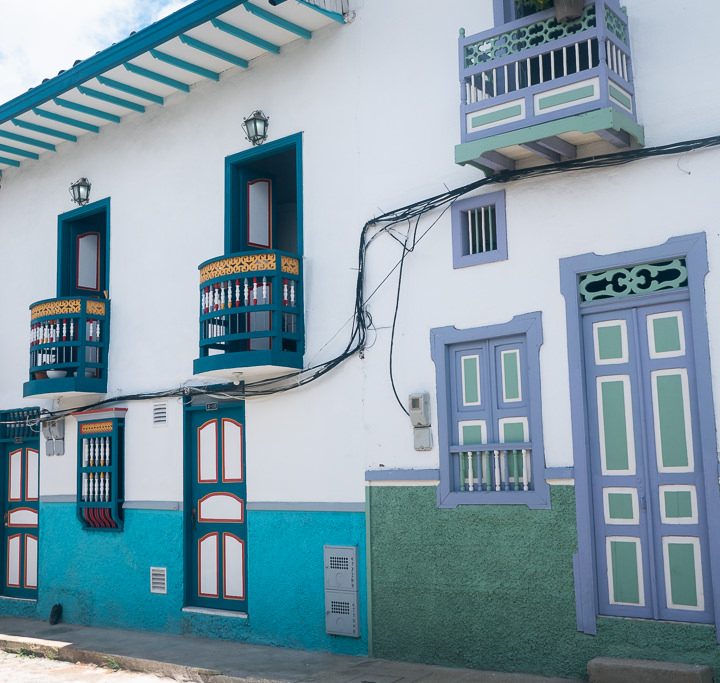
Part of the fun of Jericó is simply to stay on the main square with a beer or a meal and watch local life unfold. Coffee farmers and ranchers wearing their typical hats can be often seen meeting on the small main square for trading their goods or to buy supplies. Jerico just has a great vibe and feels very unspoiled.
In August, Jericó has a big festival where hundreds of colorful kites are flown over the valley. I was sadly there a bit too early, but still saw many people already practicing their kites from the town’s viewing point.
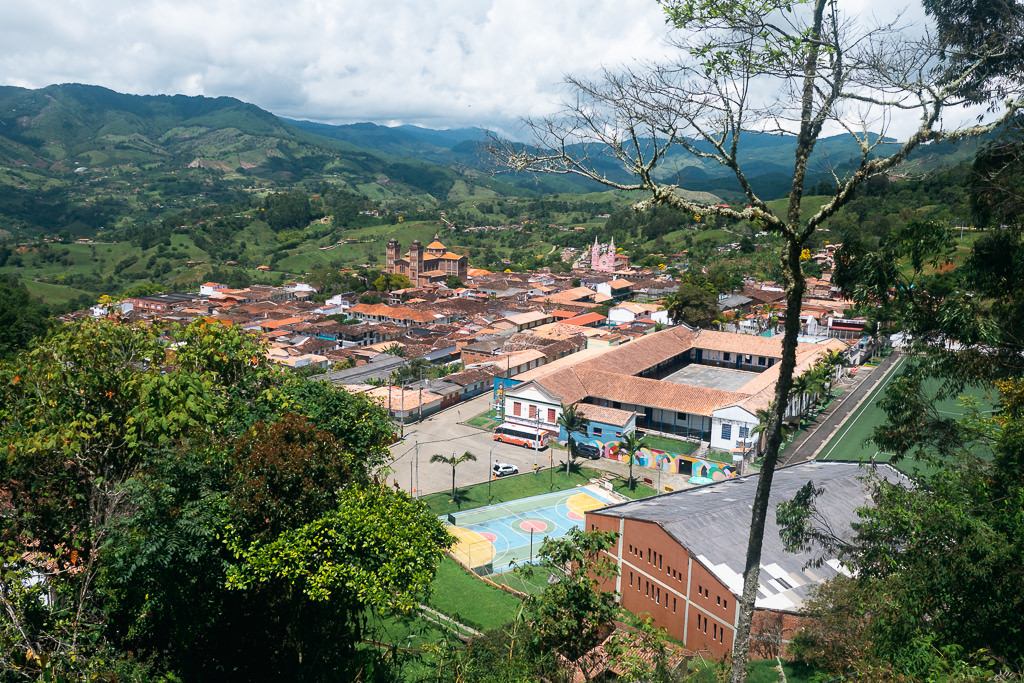
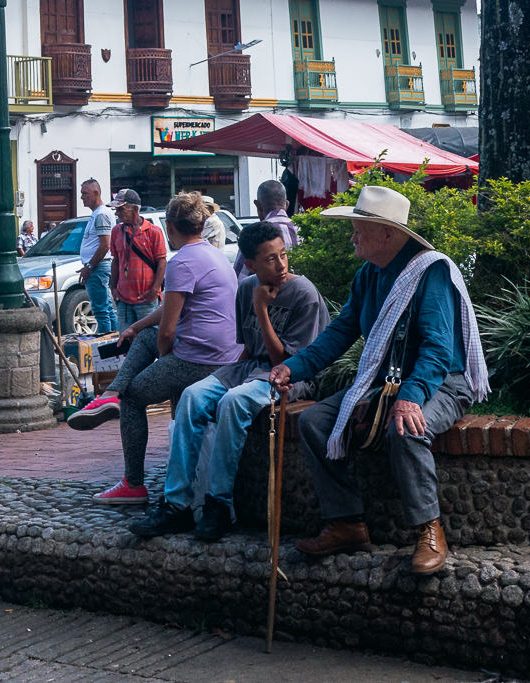
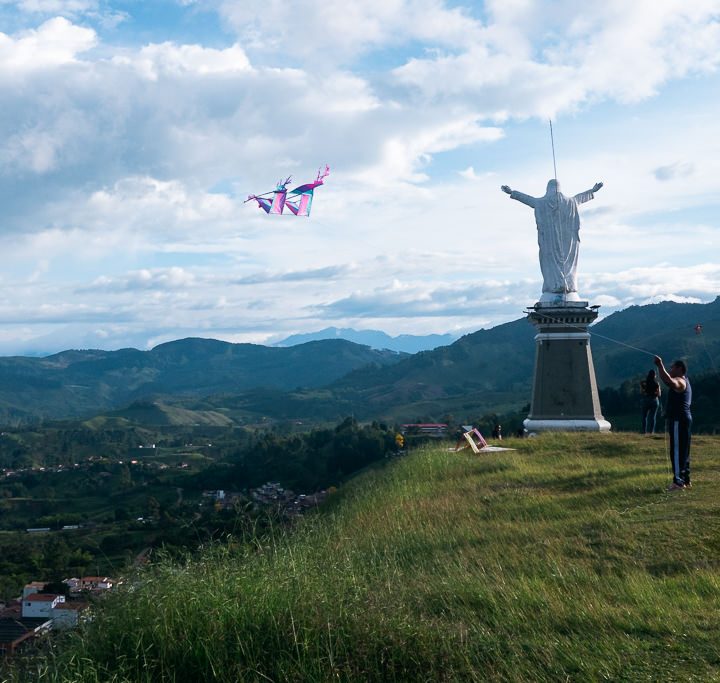
What to do in Jericó
Hike around town, people-watch in the main square, visit the viewing point and see the small botanical garden. More suggestions here and on this blog here. Although there are not so many ready-made activities, you can go on coffee tours in the surrounding area. The Mother Laura Coffee Tour of Jerico gets rave reviews.
Where to stay in Jericó
Backpackers will love Parcerito’s Hostel, which is very social as it’s built around a central courtyard, though the rooms are very basic. Aside from Parcerito’s I also stayed in the boutique hotel El Despertar which has a lovely viewing deck with a hot tub and friendly family-run management. While I didn’t stay there I also want to draw your attention to this Riverside Ecoliving Space which should be perfect for digital nomads.
Where to eat
Restaurante La Gruta offers an amazing set meal at lunch that’s both delicious and great value. Cafe Don Rafa on the main square has specialty coffee and treats.
Chiva to Jardín
From Jericó to Jardín it’s only 20 miles (32 km) as the crow flies. But your only direct transportation option is a chiva (a truck converted into a bus) that does the trip in about… six hours.
You could say that this is a mind-bogglingly slow and terribly inefficient way to hop to the next town — and you’d be right.
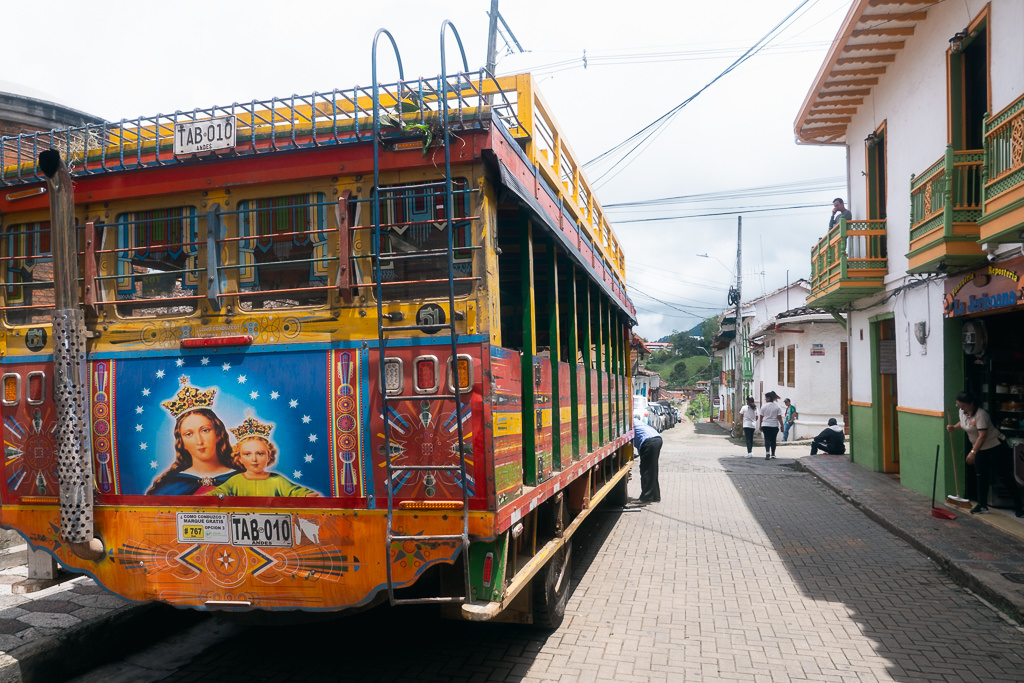
But look at this another way and it’s actually the cheapest tour of the coffee region landscapes you can get. For just a couple of bucks, you get to spend several hours driving slowly through backroads in the Zona Cafetera. You’ll be treated to some insanely gorgeous views especially towards the end of the trip.
Now, my chiva got stuck in the mud… twice. We had to help a banana truck that had tipped over the side of the dirt road. We got into a “who blinks first” stand-off with another chiva on a road that could fit only one.
Progress was slow, but it didn’t matter. This trip was possibly the most fun day I’ve had on this itinerary. It alone was worth going to Jericó for.
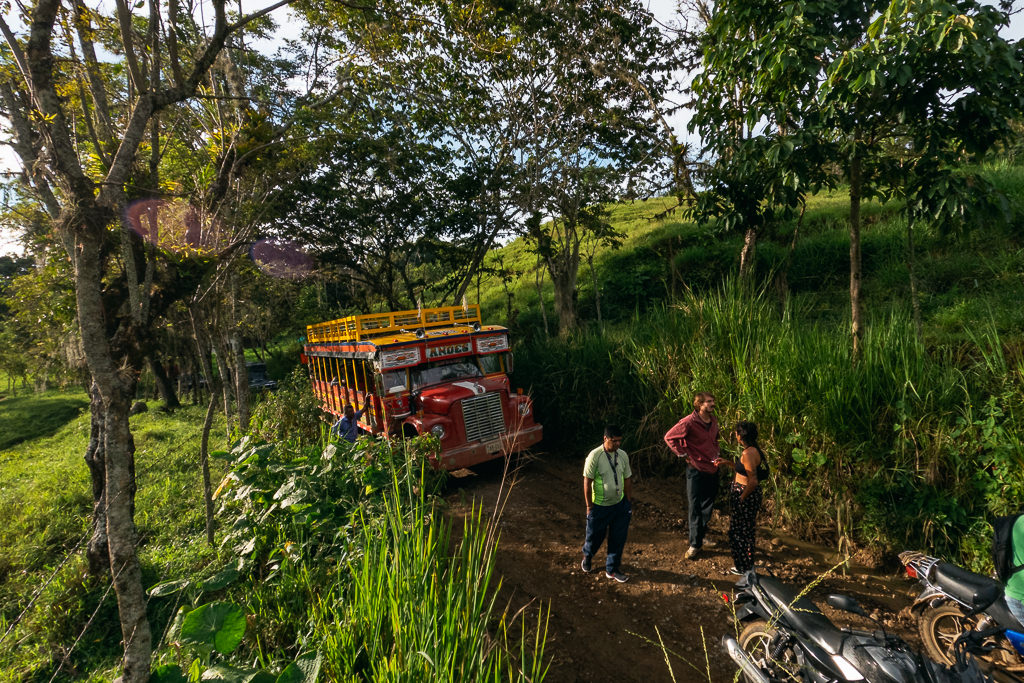
You can find the chiva departure point beside the main square in Jericó, opposite of Restaurante La Gruta. It leaves only once or twice a day; inquire locally for the current timetable.
Jardín
Literally meaning “garden” in Spanish, Jardín is certainly a pretty place, with colonial facades and green mountains forming wonderful backdrops on all sides.
Jardín has quite a lot to do in and around it (much more so than low-key Jerico), which makes it an easy place to add into your itinerary. It can also serve to nicely break up the journey from Medellin to Salento or Armenia.
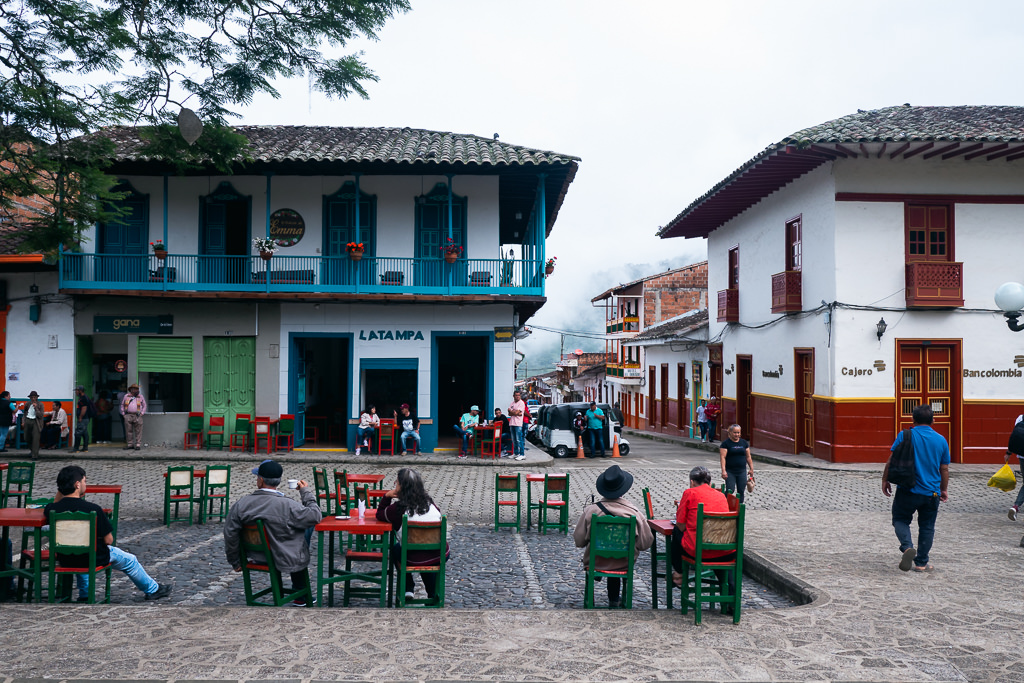
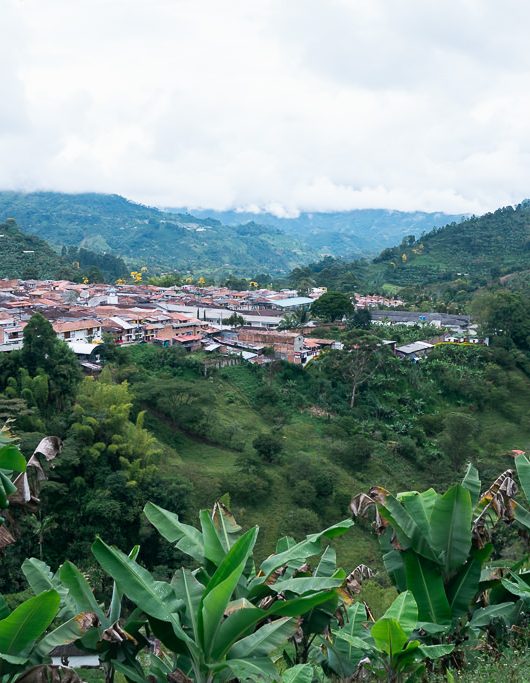
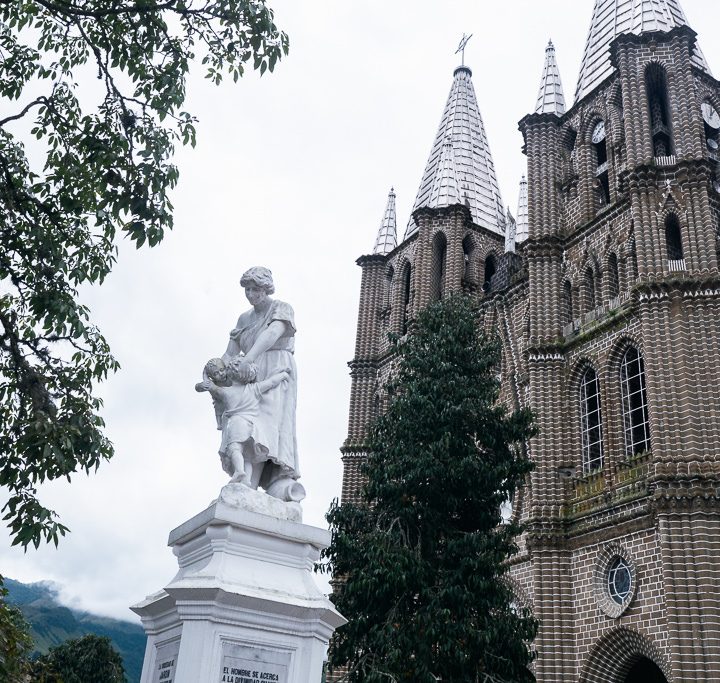
The main square gets very lively with people enjoying beers and snacks at colorful chairs and tables. Sometimes you’ll see a local rancher on horseback going past. Given its charms and how much there is to do nearby, if you only have time for one town in the coffee region, I think Jardín is a perfect choice.
It’s a popular weekend spot for Colombian families and is still only somewhat known among foreign travelers. There are ten or-so backpacker hostels and many small-scale hotels to choose from in Jardin.
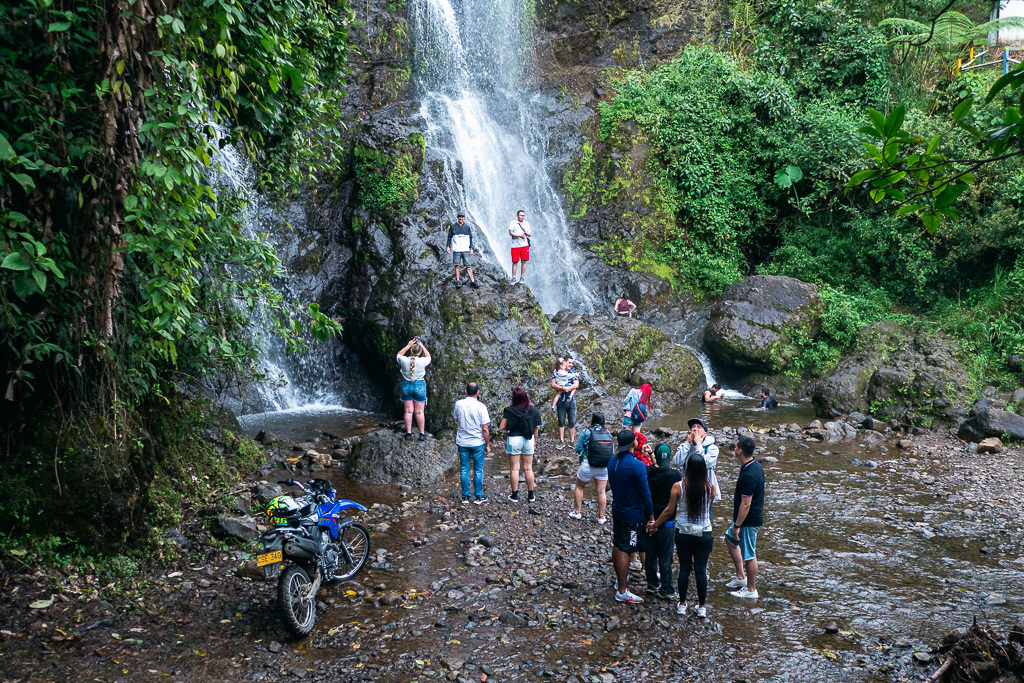
What to do in Jardín
You can hike to several waterfalls. The Cueva del Esplendor (Cave of Splendor) is inside a cavern and can only be reached by way of an organized tour. La Garrucha, a small metal gondola that takes you up the mountain, was sadly out of commission when I visited, but it’s meant to be a fun attraction when it’s open. Paragliding, birdwatching, coffee tours, and horseback riding are the other activities on offer. You can book day tours from Medellin that go back the same day, but if you’re staying longer, you can book activities from local agencies or your accommodation.
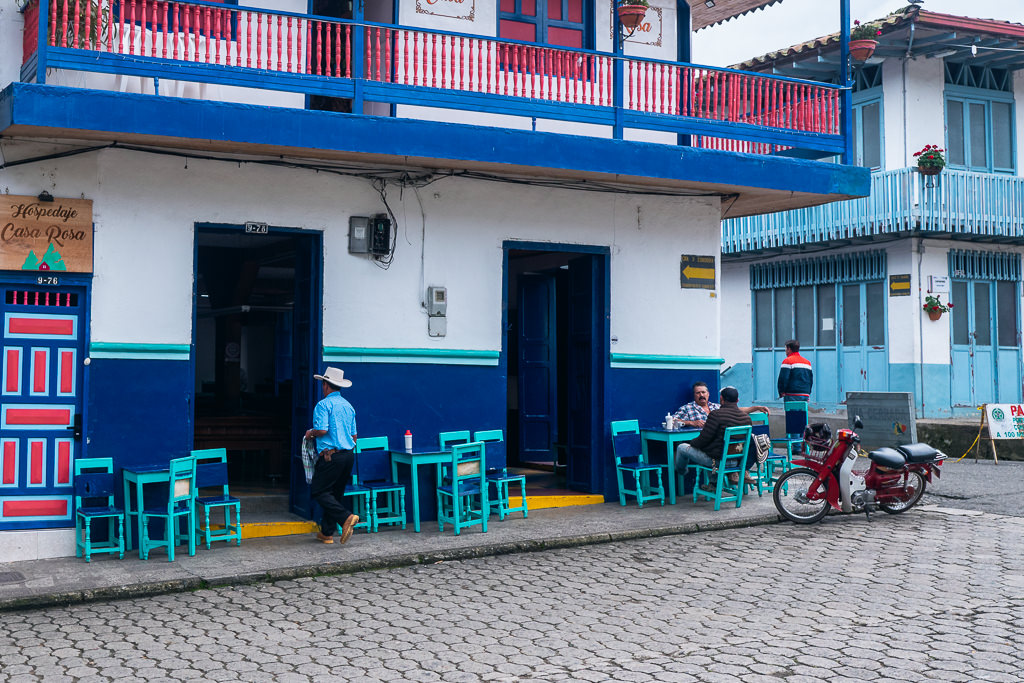
Where to stay in Jardín
The cozy family-run Hostal Naty Luna is a nice spot for backpackers and it’s where I stayed, though it being a bit cramped I would actually suggest La Tangara Rural hostal instead. For a beautiful boutique hotel, check out Casa Passiflora Hotel.
Where to eat in Jardín
The town is known for its trout farms where you can get very fresh fish at very low prices (ask them to grill it instead of frying it if you want it more ‘Western’ style). La Argelia Restaurante Truchera just outside of town is a fun experience during lunchtime. Don’t miss brunch or coffee at Café Macanas next to the main church. The artisanal ice cream at Cocoa Café Francés is out of this world — is it weird that I had possibly the best gelato of my life in a small mountain town in Colombia?
Manizales
To add some variety to your Zona Cafetera itinerary, it’s worth visiting Manizales. This small university city offers mountain views on every side, though it is more of a waypoint than a destination in itself. It doesn’t really have an old center and there aren’t that many cultural attractions, but it does have some great things to see nearby.
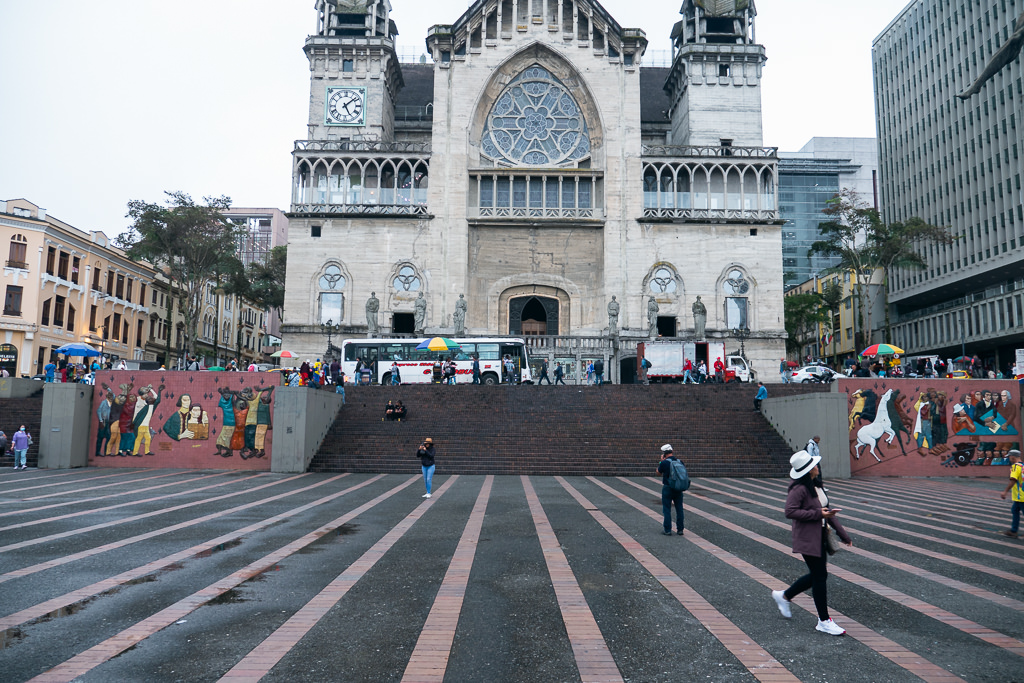
It’s still nice to spend maybe half a day in this non-touristy city in Colombia, then use it as a springboard to visiting Los Nevados National Park.
There you can experience the páramo — a unique high-altitude ecosystem located only in the Andes of Ecuador, Peru, and Colombia.
On the misty slopes, you’ll see fields of frailejones, strange tree-like plants that grow up to 3 meters in height and are distant cousins of the sunflower.
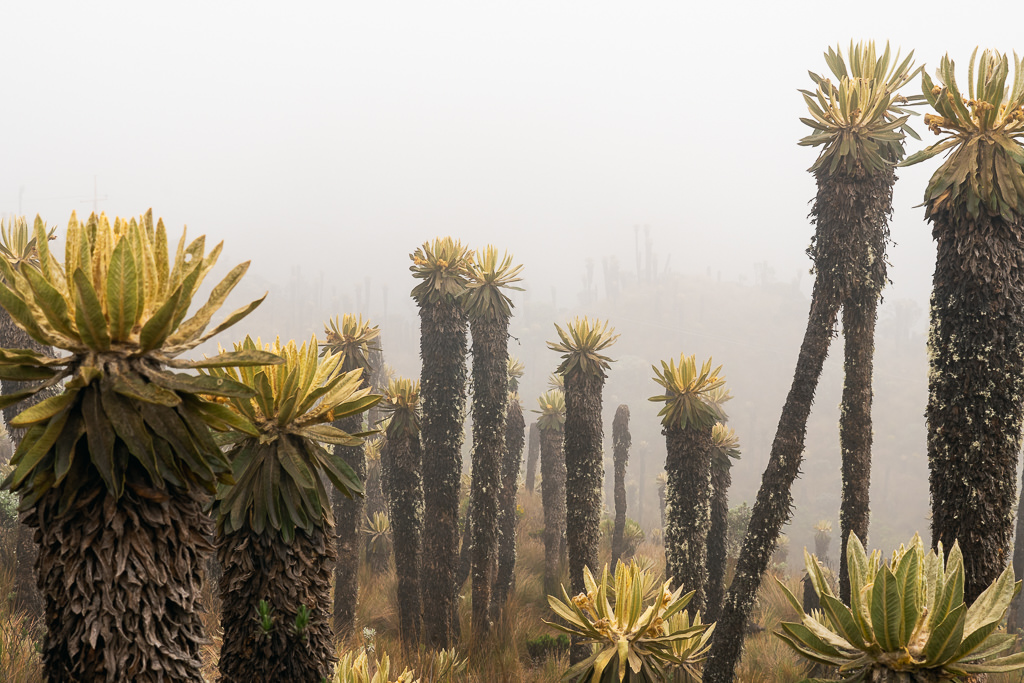
Trekking, biking, or jeep tours of Los Nevados can be easily booked locally, such as through Ecosystemas Travel. I did my tour with them and loved it (though some Spanish knowledge will be very helpful).
Unlike the mild climates in the coffee zone, the Los Nevados National Park will be mostly very cold and misty, but that makes it an interesting break on your Zona Cafetera route. Many of the tours stop by volcanic thermal baths, letting you relax and warm up before returning to your accommodation.
What to do in Manizales
Visit the Plaza de Toros bull ring, get some great views from Chipre Tower, ride the cable car connecting the two parts of the city, or hit up the nightlife; being a big student city it’s known for its many bars near the university areas around Estrella in the east. Manizales has an overall better reputation for safety than Bogota or Medellin. And, of course, you can book a tour of Los Nevados.
Where to stay in Manizales
I stayed at Hostal de la 57 which was perfectly fine. For a hotel in the centre, check out Quo Quality Hotel (I can’t believe this fancy hotel is just 40 bucks a night) or Lodge Paraíso Verde for a beautiful finca in the nearby mountains.
Where to eat in Manizales
There are loads of international food places around Estrella serving trendy food at very affordable prices. Check out Oryza Food Co, Alchile Taquería, or Callejera Street Food. There is also a kind of hipster food court at Magnolio Mercado Gastronómico which also has several bars serving local craft beers.
Salamina
Despite being recognized as one of the heritage towns of Colombia, Salamina seems virtually unknown among international tourists. It takes 3 hours to get to Salamina from Manizales; because it’s a bit out of the way it isn’t touristy in the slightest.
If you enjoy straying off the usual path and appreciate the authenticity, then Salamina is one of the most charming stops in the Zona Cafetera. (It is probably tied with Jerico as my personal favorites.)
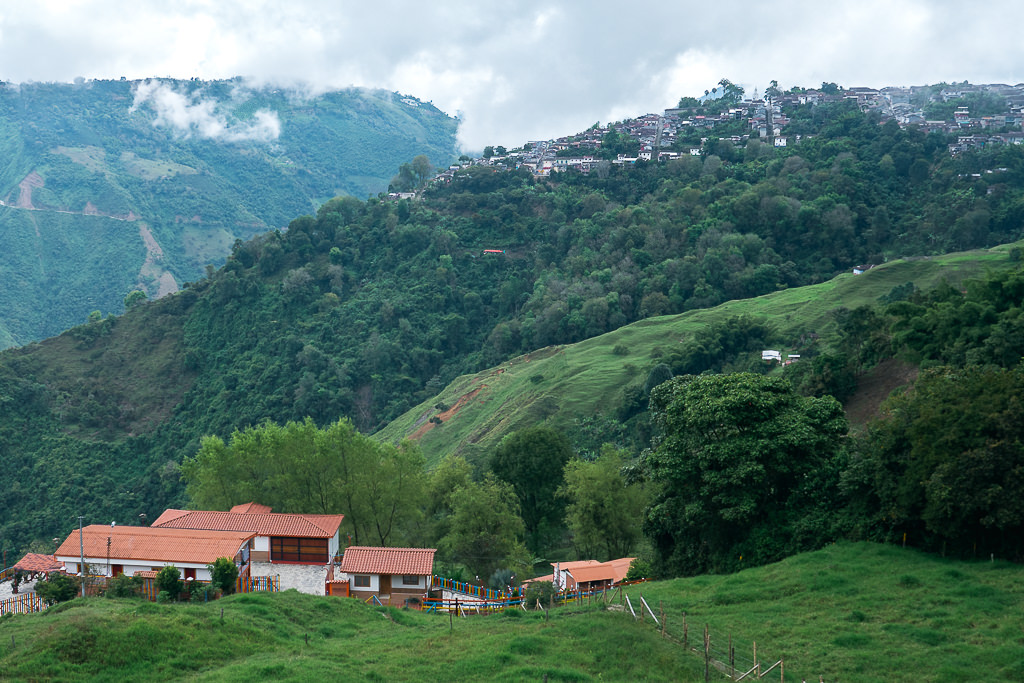
While Salamina itself is fairly low-key, there is one major attraction nearby: the Valle de la Samaria. Much like the tourist hot spot of Valle del Cocora near Salento, you can see towering wax palm trees in this valley, some of which are known to be among the tallest palm trees in the world. The only difference is that in Valle de la Samaria you can be virtually alone.
I’ve shared much more information about how to get to Salamina and the valley in my post about alternatives to Salento. It takes a bit of effort to get to, but it’s well worth it.
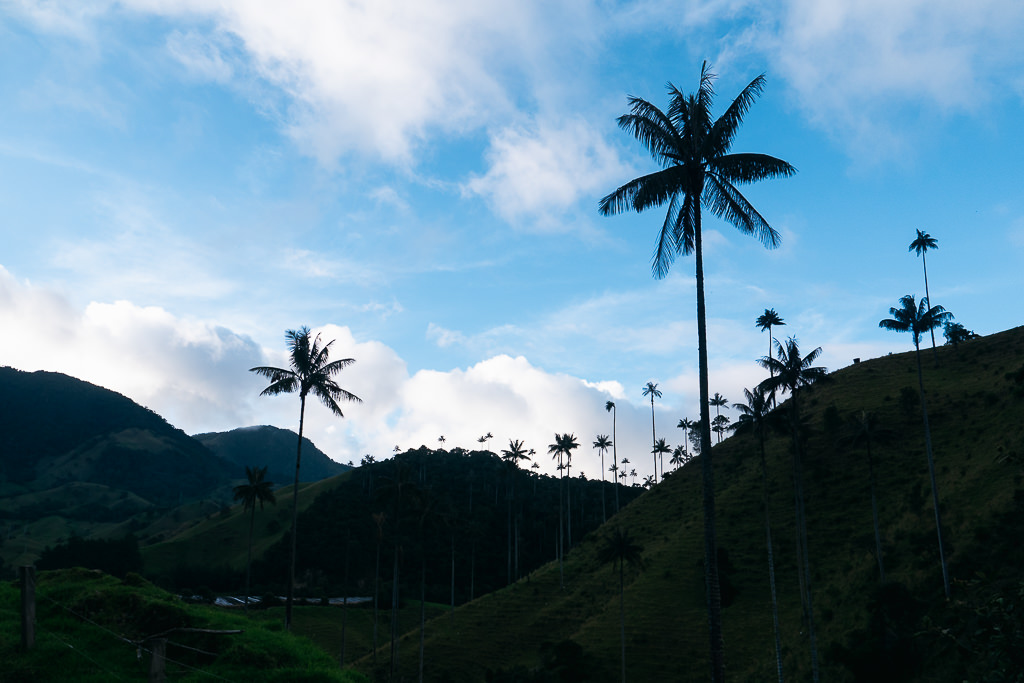
What to do in Salamina
Part of the appeal is just to watch local life, maybe go on a hike around the town, and visit the local shops. Then hop on a jeep to the village of San Felix and hike around the Valle de la Samaria.
Where to stay in Salamina
Bonsai Casa Hotel is the main budget-friendly backpacker hotel. For a more upscale boutique option, check out either La Estancia or Hotel Boutique La Leyenda 1860. These still offer fantastic deals and value for money. If you want to stay inside the valley, the best option is Eco Hotel Valle de la Samaria — I stayed there and it’s a very special place!
Where to eat in Salamina
Lola Gourmet on the main square does a very nice set meal.
Filandia
The small town of Salento is the biggest tourist destination in Colombia’s coffee zone, but since it’s been getting overcrowded in recent years, the nearby town of Filandia has been getting some of the overflow. I love it as an alternative to Salento — it’s more relaxed, but still lively enough to choose it as your base in this area.
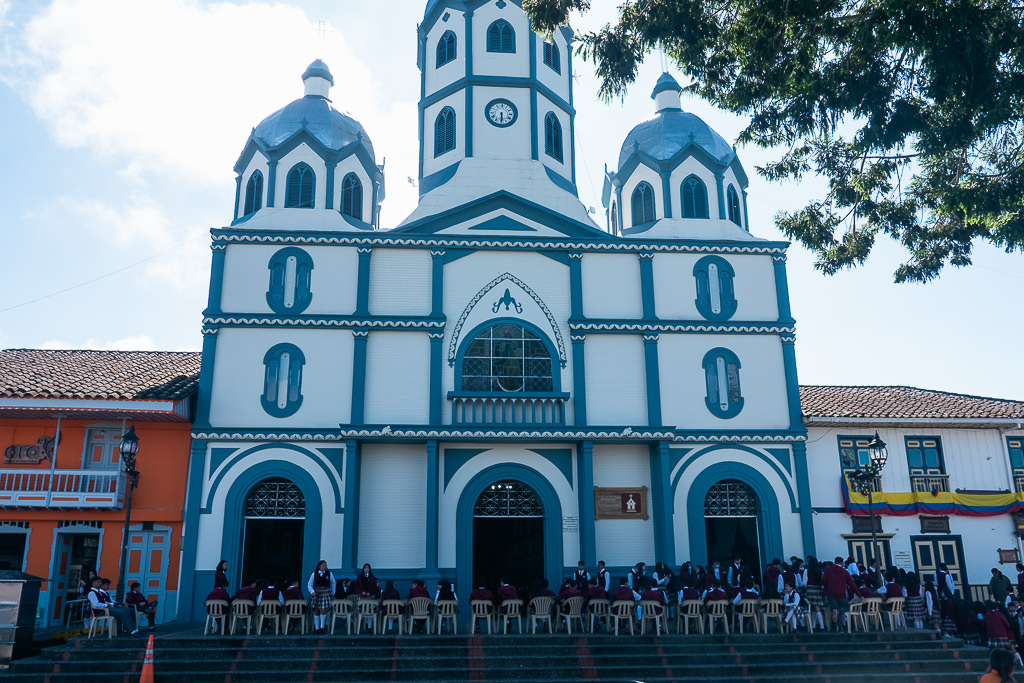
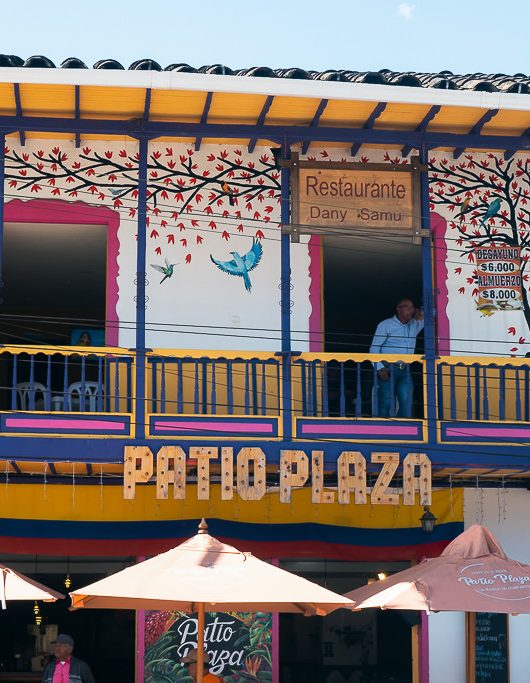
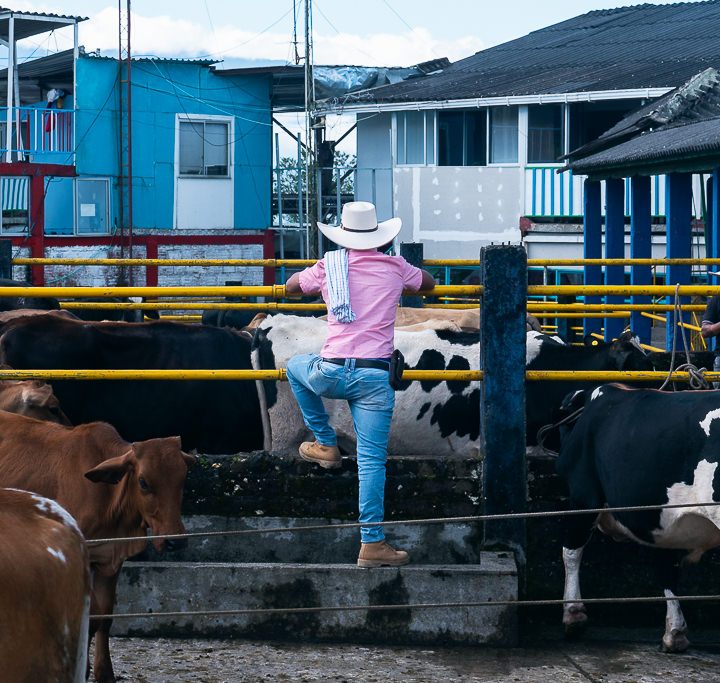
The colorful colonial town of Filandia sits atop a hill overlooking the rolling green hills of the coffee region. Coffee farmers and ranchers are its main inhabitants, but it’s also tourist-friendly with trendy restaurants around the main square, a number of hostels and small hotels, and plenty of fun activities in the area.
What to do in Filandia
Visit nearby coffee farms, mountain bike to the town of Quimbaya, hike to hidden waterfalls or visit the Barbas-Bremen reserve where you can spot howler monkeys. Take a day to see the stunning palm trees in Cocora Valley.
Where to stay in Filandia
I was on a budget and stayed at Bidea Hostel, a somewhat labyrinthine yet cozy hostel with a great atmosphere. For a little more upscale accommodation, I suggest the boutique hotel El Reloj Casa. Outside of town and among the coffee fields, you can also find a beautiful Selina hostel on the site of a former coffee farm that offers everything from bungalows to glamping to hotel rooms.
Where to eat in Filandia
A string of restaurants on the north side offers stunning sunset views of the landscape in addition to some amazing food — in particular, don’t miss Helena Adentro or Cultivar.
Pijao
The mountain town of Pijao was my last stop on this trip; it was a last-minute addition based on the recommendation of a friend. Located south of Armenia, it’s another highly authentic and quiet destination, similar to Jerico or Salamina.
The town’s name might not seem Spanish and that’s because it refers to the indigenous Pijao people that were living in the present-day department of Tolima, Colombia.
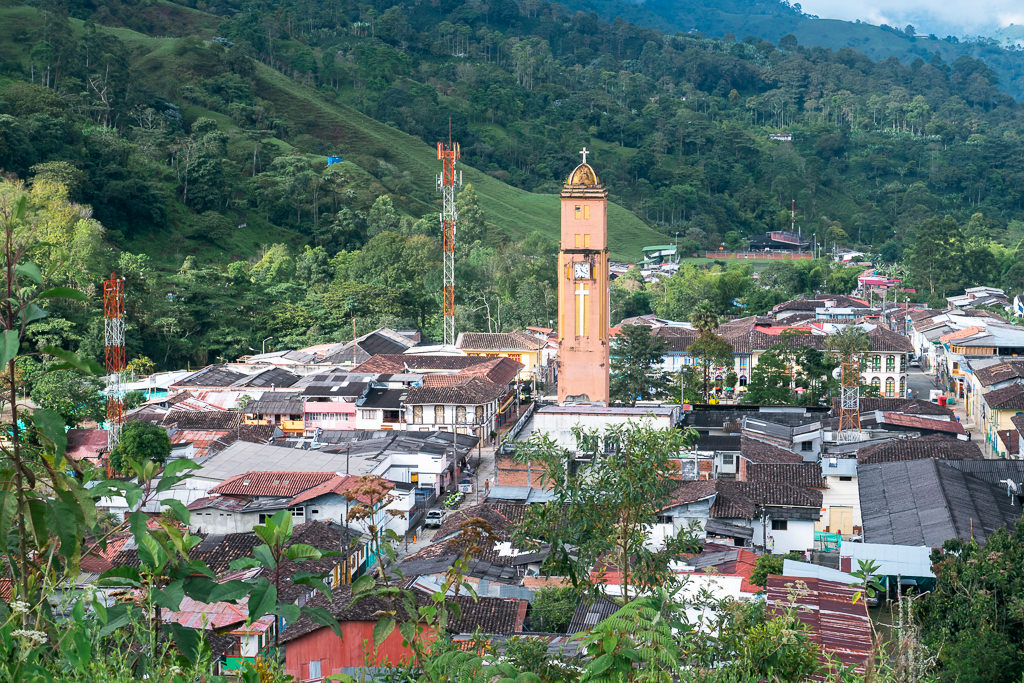
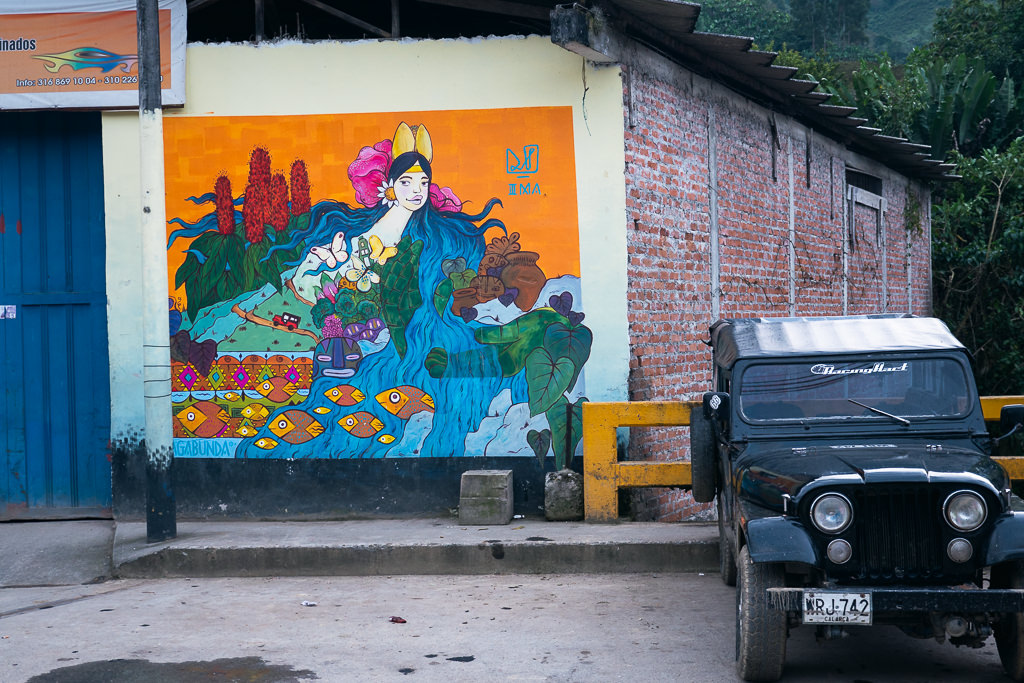
It’s a very peaceful town with barely any foreign tourists, best appreciated if you’re looking for a simple place surrounded by green mountains. You can either stay in the town itself or opt for one of the fincas (converted farms) or eco-cabañas on the nearby slopes.
Pijao might be put on the travel map a bit more in the future. I’ve heard rumors that Selina is planning to open a hostel/hotel there, which will no doubt attract a few more travellers and digital nomads to this wonderful little place.
What to do in Pijao
There are several mountain hikes you can do in the area. Ask locally for where the trailheads are. Use apps like MAPS.me or Alltrails to help you find the way; there are signs but not that many. I did a wonderful day hike along the river. You can also go up the mountain to the Páramo de Chili — a great opportunity to see this type of ecosystem in a self-guided way. This excellent blog on Pijao has more suggestions and I heard some great things about the Wakecup Coffee Tour in Pijao (which I sadly had to miss).
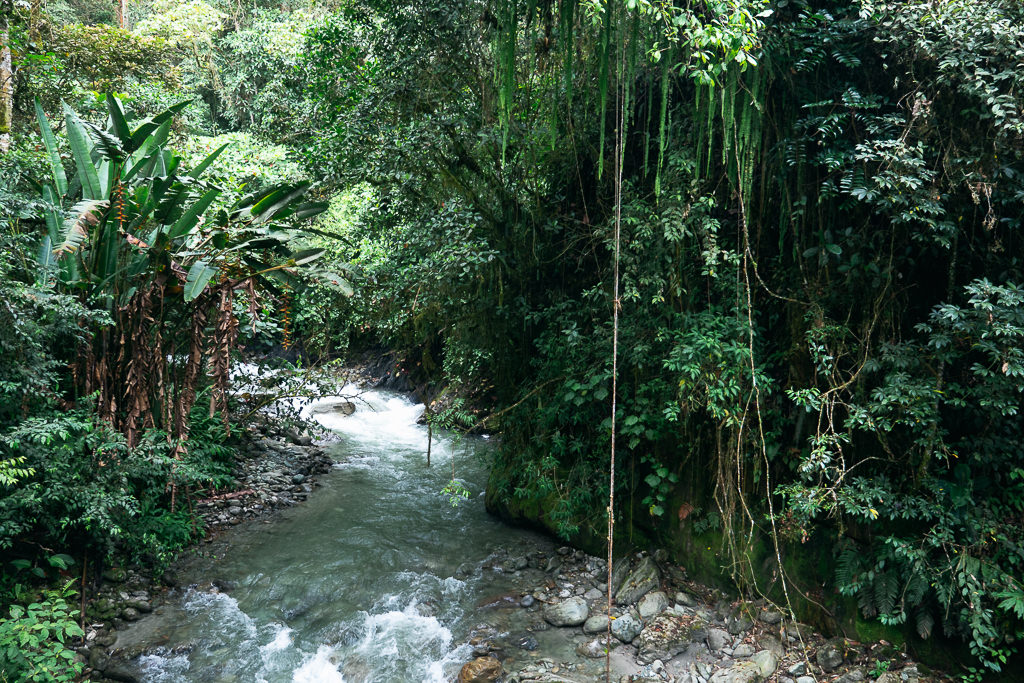
Where to stay in Pijao
I stayed in Casa Victoria which was just delightful. It has some very nice rooms and a very friendly and welcoming owner. The terrace looking out towards the river lets you swing in a hammock or chat with other guests. The owner can provide lots of information about hiking trails and other activities.
Where to eat in Pijao
For great lunch set meals go to the food stalls located behind the main plaza on the side of the river. Cafe Montanero does good Colombian dinners and for great coffee be sure to visit La Floresta.
Some links may be affiliate links, meaning I may earn commission from products or services I recommend. For more, see site policies.

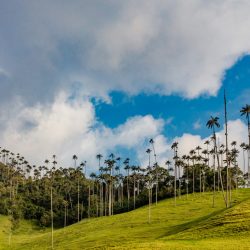




Hi Marek, my wife and I are wanting to find out how best to go from Filandia to Jardin,but are struggling finding a way. Any advice would be much appreciated!
Cheers,Zat.
Hi Zat. Try getting to Manizales first… there should be a bus from there to Jardin
Hi, I’m really enjoying your web site. I’m going to go to Colombia for about 3.5 weeks in March and would like to do something just like what you did, going from one small town to the next in the Eje Cafetero. I’m thinking I’ll fly into Medellin but I’m not sure from where to fly back home, but I imagine it would be Bogota. Can you recommend an interesting way to end up in Bogota? If possible, I think I’d prefer not to fly there but to break up the trip from the coffee zone to Bogota with a few over night stops in interesting places.
I appreciate any suggestions you might have.
I understand not wanting to fly… I often find it more fun to do it overland if possible. If you have enough time you can make a big circle via Cali, San Agustin, the Tatacoa desert, and then Bogota. Or you could go to Manizales, to Honda, then Bogota. I haven’t been to Honda but heard some nice things about it… a historical city off the usual travel trail.